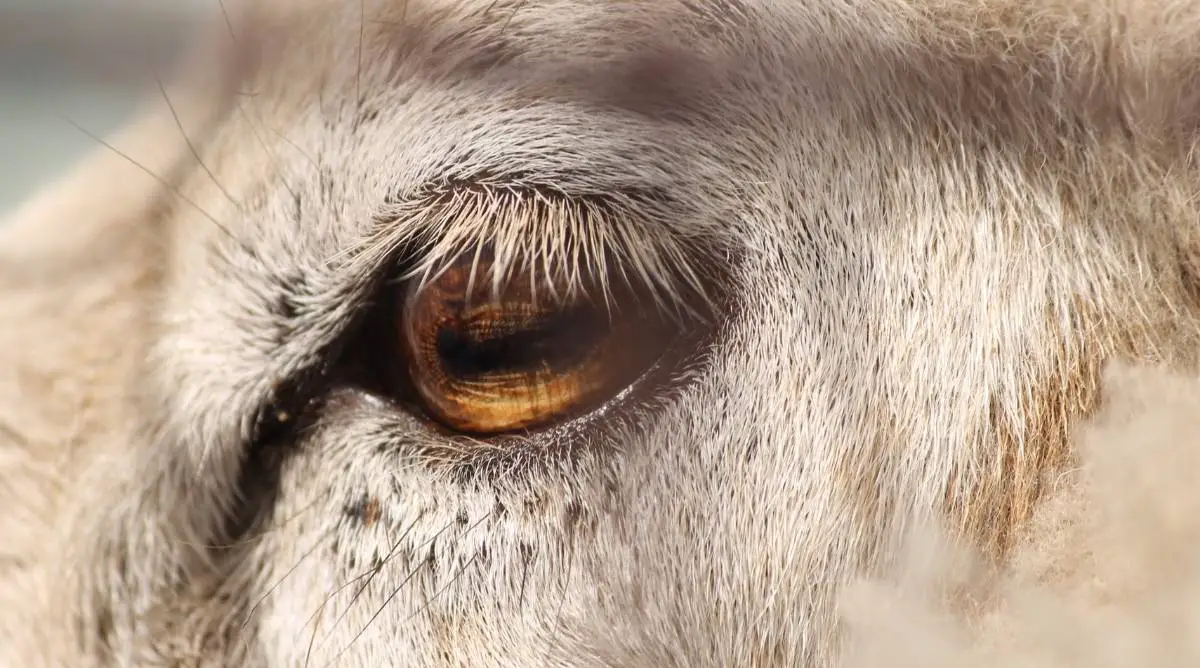Sheep have excellent peripheral vision covering a 320-340 degree range. Their large pupil size also gives them strong night vision. Sheep can see yellow, green, blue, and purple hues, but cannot see the color red.
Table of Contents
How good is a sheep’s eyesight?
| Component of vision | Description |
| Peripheral vision | Excellent. 320-340 degrees. Since sheep’s eyes are on the sides of their head, they can almost see directly behind them. |
| Color spectrum | Sheep cannot see the color red. Their vision is dominated by yellow and blue hues. |
| Distance | Sheep can see objects up to 20 feet away. |
| Clarity | Poor visual acuity. |
| Depth perception | Poor depth perception. |
| Night vision | Due to their large, rectangular pupils, sheep have good night vision. |
A sheep’s pupil is large and rectangular, and their eyes are on the sides of their head, giving them a massive panoramic 320 to 340-degree field of vision. The larger pupil size means they have good night vision.
When sheep have their heads down, they can see all around them. Sheep can almost see behind their backs without having to turn their heads! This means sheep can easily see farmers or predators approaching from behind when they are grazing.
When sheep’s heads are up, the area behind them is a blind spot.
What colors can a sheep see?

Sheep are not colorblind. Sheep can see in color, but not in as much detail as humans. Sheep are dichromats, while humans are trichromats – meaning humans have access to a wider range of colors.
Sheep can see the following colors:
- Blue
- Cyan
- Greenish hues
- Yellow
Sheep do not see the color red. They are most receptive to yellow and blue hues.
A sheep’s range of vision

Unlike humans and predators that have binocular vision, sheep have monocular vision.
Sheep can see objects up to 20 feet away and have excellent peripheral vision of 320-340 degrees.
However, they don’t have great visual clarity.
Sheep also have poor depth perception, which may affect their behavior and make them cautious as they navigate difficult terrain.
Sheep vision facts
- A sheep’s eyesight is the best when its head is down and it’s grazing
- Sheep cannot see the area immediately in front of their noses
- Sheep may react with fear to new colors
- A sheep’s vertical vision is poor. Their peripheral vision is focused on what’s immediately around them.
- Sheep can roll their eyes upward by about 50 degrees to expand their range of vision.

